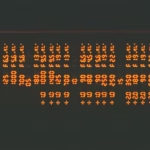In today’s digital and cultural landscape, new phrases often emerge and spread quickly, embedded with meanings that stretch beyond their literal interpretation. One such term that has gained growing curiosity is “cent gewes”. While at first glance it might appear to be a typographical error or a linguistic oddity, a deeper investigation reveals that it represents a fusion of language, cultural commentary, and evolving identity. But what exactly does “cent gewes” mean, and why is it attracting attention now?
Within the first hundred words, it’s important to clarify that “cent gewe’s” is a conceptual phrase, not tied to a single dictionary definition. It represents a cultural marker, often deployed in discussions around value, memory, and transitional identity. Whether used metaphorically or satirically, it underscores how language can shape and reflect societal change, nostalgia, or resistance.
The Etymological Puzzle
“Cent gewe’s” does not emerge from standard linguistic roots in any dominant language. It is, instead, a constructed term with an interpretive origin. Some theorists argue that “cent” may allude to value or currency—a small unit that, when aggregated, holds significance. “Gewes” appears to echo past-tense Germanic structures, reminiscent of archaic or poetic expressions of “was” or “has been.”
Put together, “cent gewes” could suggest “what was once of small value” or “the forgotten worth.” It captures the spirit of past experiences, underestimated entities, or undervalued cultural moments that, in retrospect, carry unexpected emotional or ideological weight.
Cultural Meaning and Application
Across forums, essays, and artistic expressions, “cent gewes” has become a shorthand for reflecting on:
- Lost or ignored traditions
- Individuals who made quiet contributions
- Shifts in social norms
- Forgotten but formative events
Artists and writers have started incorporating “cent gewes” into visual and textual narratives to denote subtle transformation, historical irony, or generational critique. For example, a poet might refer to an obsolete village practice as a “cent gewe’s,” drawing attention to its quiet exit from modern consciousness.
Linguistic Play and Digital Evolution
Much of “cent gewes”‘ popularity can be traced to online communities invested in reimagining language for emotional or artistic resonance. Its appeal lies in its open-endedness. Like memes or neo-slang, it thrives in ambiguity. It has surfaced in:
- Caption culture
- Podcast lingo
- Avant-garde performance art
This adaptability makes “cent gewes” not just a phrase but a canvas for digital-age storytelling. Its obscurity is its charm; it demands interpretation and rewards those who dare to define it for themselves.
Philosophical Interpretations
At its core, “cent gewes” functions as a philosophical device. It invites questions rather than offering answers. Is ev’ery seemingly insignificant moment part of a larger mosaic of meaning? Are we too quick to discard the minor things that have shaped us?
This resonates in educational and social justice contexts, where discussions around marginality and forgotten histories find fertile ground. A cent gewe’s, in this framework, might be:
- A grassroots activist whose impact was never widely recognized
- A local tradition discontinued in the name of progress
- A childhood habit we outgrow but later long for
Psychological and Emotional Impact
There’s an emotional gravity to “cent gewes.” It triggers memory, evokes nostalgia, and sometimes even grief. In therapeutic settings, people have begun using the phrase to mark turning points that were undervalued at the time but later recognized as meaningful.
In this way, “cent gewe’s” can be a tool for healing or reflection:
- It validates overlooked experiences
- It invites a reframing of personal narratives
- It emphasizes that value is subjective and evolving
This mirrors cognitive behavioral therapy principles, where reinterpretation of past events fosters emotional resilience.
Cent Gewes in Popular Culture
Despite its philosophical and linguistic depth, “cent gewe’s” has not remained in niche circles. Musicians, influencers, and content creators have embraced it as a brandable moment. One viral video used it as a punchline to a nostalgic anecdote, while another TikTok trend centered around everyday actions now seen as obsolete or humorous.
This use does not cheapen its meaning but rather illustrates its flexibility. “Cent gewes” is both profound and playful—an emblem of postmodern communication.
Academic Engagement
Scholars from disciplines such as linguistics, semiotics, and cultural anthropology have begun including “cent gewe’s” in their research. Its rise provides fertile ground to explore how digital-native phrases gain traction and evolve into intellectual artifacts.
It is now being studied in:
- University thesis papers
- Linguistic theory journals
- Discourse analysis workshops
Academics see it as a prime example of grassroots language innovation, wherein meaning is democratized rather than imposed.
Cross-Cultural and Transnational Appeal
Interestingly, “cent gewes” has no singular cultural home. It resonates in multilingual communities, especially those navigating hybrid identities. In diasporic narratives, the term has found particular traction, serving as a cipher for:
- Dual heritage
- Displacement and belonging
- Cultural hybridity
It bridges generational gaps, enabling grandparents and digital-native grandchildren to converse about loss, identity, and change through a common term.
Social Commentary and Political Usage
Some activists have appropriated “cent gewes” to critique systemic erasure. Whether speaking about endangered languages, vanishing neighborhoods, or suppressed voices, the term becomes a metaphor for what society chooses to ignore.
In political discourse, “cent gewes” can represent:
- Unfunded community programs
- Forgotten campaign promises
- Marginalized narratives excluded from mainstream history
In this light, it serves as both a lament and a call to action.
The Future of “Cent Gewes”
As with any cultural term, the future of “cent gewes” depends on its continued relevance. It may fade, transform, or become institutionalized in education or media. What is clear, however, is that it has already sparked a new way of thinking—a revaluation of what is small, past, or dismissed.
Rather than being a fleeting trend, “cent gewes” might just be the language we need to discuss a world in flux. One where meaning is increasingly decentralized, and history is always under revision.
Conclusion
In a time marked by rapid change and cultural fragmentation, the emergence of terms like “cent gewes” reminds us of language’s power to anchor thought and feeling. Far from being a meaningless phrase, it opens a door to discussions about memory, value, marginalization, and transformation. Whether through art, activism, therapy, or personal reflection, the “cent gewes” continues to echo—quietly but unmistakably—through the stories we tell and the meanings we make.
FAQs
1. What does the term “cent gewes” mean?
“Cent gewes” is a conceptual and interpretive phrase that suggests something once considered minor or insignificant but later recognized as meaningful or impactful. It often symbolizes forgotten value, overlooked history, or quiet transformation.
2. Where did “cent gewes” originate?
The term doesn’t have a clear linguistic or geographic origin. It’s a constructed phrase that has emerged through digital culture and artistic circles, blending symbolic elements from various languages and emotional registers.
3. How is “cent gewes” used in modern conversation?
It is used metaphorically to describe overlooked traditions, quiet personal milestones, or undervalued social contributions. It’s common in artistic, academic, and digital spaces, particularly in discussions about memory, change, or marginalized narratives.
4. Is “cent gewes” part of any specific language?
No. While it echoes elements of English and Germanic linguistic forms, “cent gewes” is not officially part of any one language. It exists more as a cultural and emotional concept than a standard linguistic term.
5. Why is “cent gewes” gaining popularity now?
Its rise reflects a growing interest in nuanced identity, nostalgia, and societal introspection. In an era of rapid change and cultural revision, people are turning to terms like “cent gewes” to articulate subtle shifts, quiet losses, and personal rediscoveries.











